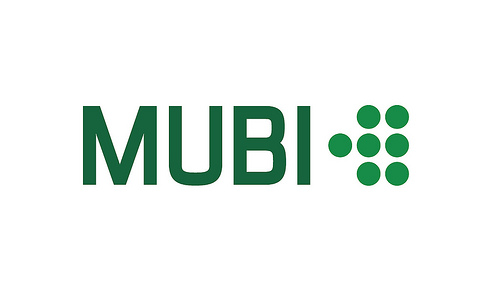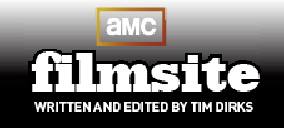The Bookend Technique in HANNA
29 May 2011
The bookend technique is often used in storytelling, be it cinema, poetry, plays, novels, song lyrics, photography, etc. In popular cinema, this technique most often (but not exclusively) refers to a parallel between the opening and closing sequences or shots in a film. The first scene is re-visioned, with only minor changes, in the film’s final scene
leaving the audience with a feeling of completion; what was started is now finished. To bookend something, in cinema, suggests the beginning and ending sequences or shots are so well constructed the rest of the film (everything after the opening and before the very end) can be contained within the bookends.
In his latest film, Hanna, Joe Wright employs the bookend technique. The opening sequence (the first bookend) depicts Hanna (Saoirse Ronan) as she stealthily hunts a moose in snow-drenched woods. Camouflaged between trees and motionless, Hanna shoots her arrow, puncturing the unsuspecting animal. Injured, the animal runs with Hanna in close pursuit. Unfortunately for the moose, the wound is fatal; after a short distance, the moose falls, dying. Hanna approaches her prey, pulls the arrows from its torso, aims a loaded handgun at the its head, and utters, “I just missed your heart.” After this statement, Hanna shoots the animal. The film cuts to a red screen with “HANNA” in large, white print.
Jumping to the end, the film concludes with nearly the same sequence; the second bookend begins during the final faceoff between Hanna and Marissa (Cate Blanchett) at the abandoned amusement park. When Hanna resourcefully creates a makeshift catapult for her arrow, she hastily shoots Marissa, who in return fires a handgun at Hanna. Both women are wounded, but still mobile. Marissa, like the moose in the opening scene, runs. Also like that first bookend, Hanna, confident with the magnitude of the wound she inflicted, pursues her badly wounded prey. As she follows Marissa, Hanna encounters a moose (or perhaps deer); the animal’s presence is an overt reminder to audience of the first scene. Wright, with a strong directorial hand, is closing his film by pulling his bookends together and making sure his audience knows it.
Eventually, Hanna finds the wounded Marissa, and, just like the opening sequence, the prey (Marissa) falls. In the closing sequence, Marissa literally falls down and loses her grip on her handgun. Picking up the gun, Hanna approaches Marissa nearly identically to the way she approached the moose in the opening sequence. And, just like the beginning, Hanna utters, “I just missed your heart,” and shoots Marissa in the head. Once again, the film cuts to its last frame, a red screen with the name “HANNA” in large, white print.
In Hanna, the bookend technique works, and here’s why…
The first bookend (the opening sequence) identifies Hanna as a hunter, highlighting her strong survival skills: intelligence, agility, independence. This introduction is what the film needs to expands upon. As the film carries on, Hanna becomes not only a hunter but also the hunted. Moreover, new characters are introduced, all hunting Hanna, being hunted by Hanna, or being hunted as a result of knowing Hanna. Among them is Marissa, Hanna’s greatest opposition; Marissa is a strong, practiced hunter. Although the opening sequence established Hanna’s talent, Marissa’s skill and experience calls Hanna’s abilities into question and forces viewers to consider whether Hanna will end up the hunter or the hunted.
Since the film expands so greatly off that first bookend (the opening sequence), only the matching bookend (the final sequence) can provide closure. With the bookend technique, the ending sequence or shot must conclude what the first began. The final sequence of Hanna must end precisely with Hanna as either the hunter or the hunted definitively. Wright successfully concludes the film with Hanna killing Marissa, nearly identically to the way she killed the moose in the opening sequence. There is not a moment of film after Hanna kills Marissa because that would be beyond what the film intended to capture, or beyond what the bookends can contain.
Wright’s successful use of the bookend technique does not necessarily equate to a job well done in the film as a whole. The middle of the film seems to get a bit out of his hands, often grandiose, heavily satirical, and swerving back and forth over the line discerning narrative from expressionist film. The cinematic experience of Hanna is enthralling, but, at times, erratic. Nevertheless, there are moments, such as the bookends, that demonstrate clear focus on Wright’s part.
















[…] Bookends Technique. The bookends technique is a device used in magazine writing, screenwriting and novels to create a satisfying narrative structure by … The Bookend Technique in HANNA | Reel Club […]
Bookends Technique | Popular Question & Answer said this on 28/12/2013 at 6:11 PM |
someone knows the name of the song playing at the end of the movie, just after appearing in red HANNA?
francesca said this on 14/08/2011 at 10:37 PM |
Hey! Thanks for the comment! I think the song you’re looking for is called “Hanna’s Song (Vocal Version)” by The Chemical Brothers. Here is a YouTube link to the song! Is this it?…
Kate Bellmore said this on 14/08/2011 at 11:30 PM |
Thanks for the comment! I hear you about the uneven ratio between pictures and text. Because I assume people reading this blog are somewhat familiar with the films, I don’t (often) include a lot of plot details beyond the narrow moment(s) I am discussing, so I do depend A LOT on images to provide visual cues and explanations for some of my writing. I will work harder to increase the visual support, making it a more equal presence with the text. Also, I can try inserting pictures differently into the text so everything connects more fluidly. Again, thanks for the comment; constructive feedback like this helps me improve! Glad you enjoy Reel Club! Pass along a genre suggestion if you have one!
Kate Bellmore said this on 19/06/2011 at 10:02 PM |
I was wondering if you ever considered changing the layout of your website? Its very well written; I love what youve got to say. But maybe you could a little more in the way of content so people could connect with it better. Youve got an awful lot of text for only having 1 or two pictures. Maybe you could space it out better?
Replica Rolex DayDate said this on 06/06/2011 at 9:58 AM |